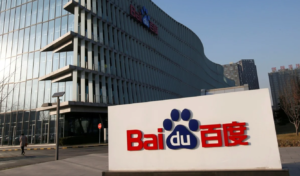Nvidia CEO Demands Urgent Overhaul of AI Chip Export Rules — What It Means for U.S. Tech Dominance is making headlines as Jensen Huang warns that the current U.S. export restrictions on AI chips could cripple the country’s long-term leadership in advanced computing and artificial intelligence. This bold statement comes at a time when global competition in AI technology is intensifying rapidly.
Why the Nvidia CEO is Sounding the Alarm
Jensen Huang’s statement isn’t just a corporate opinion—it’s a strategic warning. The U.S. government’s AI chip export controls, aimed primarily at curbing China’s access to advanced semiconductor technology, may inadvertently slow down American companies’ global growth.
Key Takeaway:
The very regulations designed to protect national interests might be backfiring—hampering U.S. innovation while other nations accelerate their AI capabilities.
Understanding the Current AI Chip Export Rules
The Biden administration, continuing some of the previous administration’s policies, restricts the sale of high-end AI chips (like Nvidia’s H100) to countries considered “high risk” from a national security perspective. These include China, Russia, and others.
| Policy Element | Details |
|---|---|
| Targeted Chips | Nvidia A100, H100, and similar |
| Restricted Countries | China, Russia, and certain Middle Eastern countries |
| Reason for Restriction | National security & military end-use prevention |
| Resulting Impact on U.S. Firms | Revenue loss, reduced global competitiveness |
How These Restrictions Hurt U.S. Tech Leadership
While intended to slow down military AI development in adversarial countries, the policy creates collateral damage:
- Revenue Impact: Nvidia generates significant revenue from international markets. Blocking sales to China alone affects billions in potential earnings.
- R&D Constraints: Reduced revenues mean less money reinvested into innovation and AI chip development.
- Talent & Collaboration Barriers: International AI research partnerships become more difficult, limiting global collaboration.
Nvidia’s Counterproposal to Policymakers
Huang is not asking for a full reversal—he’s pushing for a revision. He suggests:
- Narrower scope of export bans to exclude consumer-use chips.
- More agile update process to reflect fast-changing AI landscape.
- Transparent consultation with U.S. tech leaders before implementing rules.
A Map Breakdown of the Issue
Here’s a visual map to help readers grasp the interconnected impacts of AI chip export rules:
AI Chip Export Rules
|
--------------------------------------------------
| | |
National Security U.S. Companies Global Competition
| | |
China Restrictions ↓ Revenue / R&D China Accelerates AI
↓ Market Access UAE builds local AI farms
Global Rivals Are Catching Up Fast
China is aggressively building its own GPU supply chains, and countries like the UAE and India are investing heavily in homegrown AI infrastructure. By restricting Nvidia, the U.S. might be gifting the AI race to its competitors.
Notable Development:
- Chinese firms like Huawei are accelerating chip design.
- UAE is deploying custom AI chips for national infrastructure projects.
- India is expanding partnerships with domestic AI startups.
What This Means for Investors, Developers, and the American Public
For investors, Nvidia’s risk exposure in global markets has just grown. For AI developers, access to high-performance chips may become more limited and costly. For the public, this could lead to slower innovation and limited AI product access.
Data Point:
According to Bloomberg Intelligence, U.S. chipmakers could lose $7–11 billion in annual sales due to AI export restrictions by 2026 if current policies remain unchanged.
The Future of AI Chip Policy: What Should Be Done?
To maintain its technological edge, the U.S. must:
- Balance national security with economic freedom.
- Collaborate with U.S. AI leaders like Nvidia to draft smarter rules.
- Ensure that policies do not unintentionally weaken the domestic tech sector.
Conclusion: Will the U.S. Stay Ahead in the AI Race?
The Nvidia CEO’s demand for an urgent overhaul of AI chip export rules signals a crucial crossroads for U.S. policy. As global rivals ramp up investment and production, America must decide whether to maintain restrictive trade policies or adapt them to protect both its national security and tech industry.
With billions at stake and innovation on the line, the decisions made in the coming months will determine whether the U.S. continues to lead the world in AI—or cedes ground to more agile competitors.
[USnewsSphere.com / reu.]





